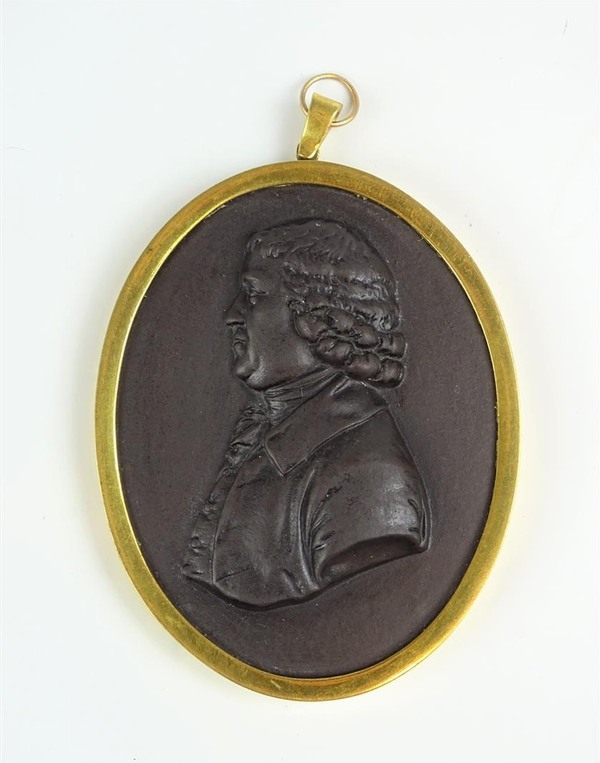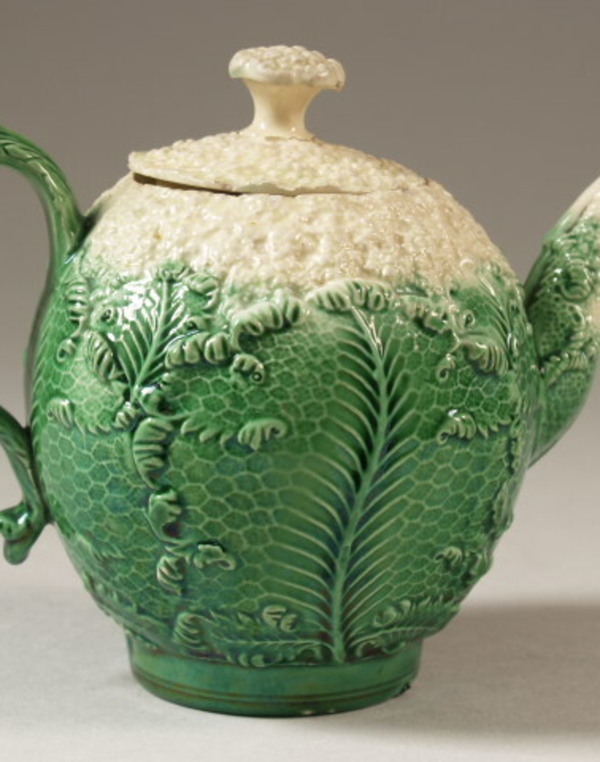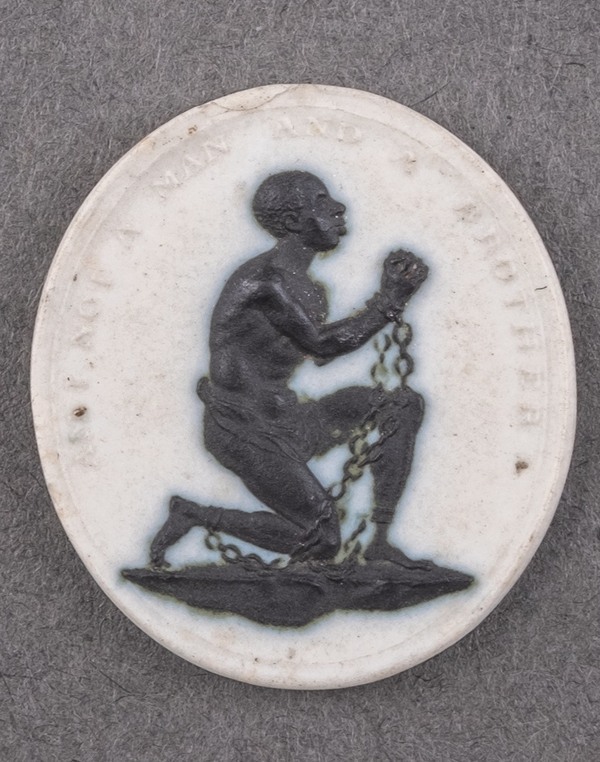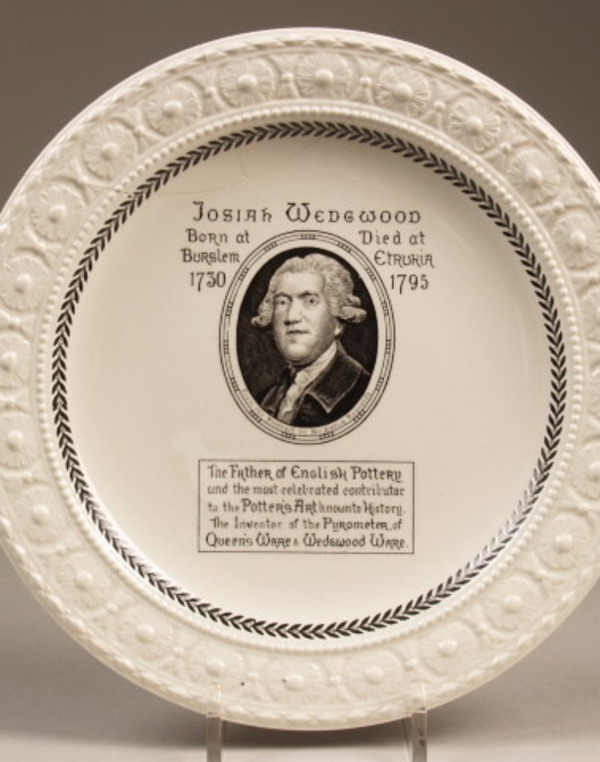Josiah Wedgwood was born on 12 July 1730 as the twelfth child in a family of potters. In 1744 he started at the bottom of the ladder in the family business The Churchyard Pottery Works to learn the basics of the trade. The company produced a traditional range of mainly red stoneware and stoneware with a salt glaze: teapots, jugs, tea and coffee cups. Josiah wanted more and after a while he no longer fit in with the somewhat conservative policy of his eldest brother Thomas. After working elsewhere for two years, Josiah started in 1754 at the factory of Thomas Whieldon and there his talent could fully flourish. Josiah was a child of the Enlightenment, a rational and critical thinker and he combined intellectual thinking and experimentation with the pottery craft as much as possible.

Portrait medallion of Josiah Wedgwood, executed in black basalt, Wedgwood, modelled by William Hackwood, 1782.
Experimenting
Besides his talent, Josiah was also fortunate that he started his working life there and at that moment in time, the time was ripe for change and the region was rich in clay and coal. He recorded his many experiments carefully (and in secret writing) in his ‘Experiment Book’. During this period, Wedgwood experimented mainly with coloured glazes and from this time dates, among other things, a teapot in the shape of a cauliflower, glazed green on the bottom and white on top, of which the Princessehof has a similar example in its possession.

Teapot in the shape of a cauliflower, England, 1760 – 1770, on loan from Ottema Kingma Stichting.
‘The bulk of our particular manufacture you know is exported to foreign markets’
In 1759 Wedgwood started his own business and in his own company the developments and experiments followed each other in rapid succession. For example, he made sure that the lathes were motor-driven, he came up with a new smoother and finer type of creamware pottery, he went into business very early on with the man who had developed the transfer printing technique, John Sadler, and, partly thanks to the construction of the Trent and Mersey Canal, he managed to scale up his production to such an extent that within a few years he had expanded his sales market to Ireland, the European mainland, America and the Caribbean: ‘The bulk of our particular manufacture you know is exported to foreign markets’, according to Wedgwood. Together with his friend, inspiration and from 1768 business partner Thomas Bentley, Josiah conquered the world with his diverse ceramic products. Together the men had a strongly developed sense of fashion, trends and technology, but also a smart sense of marketing and commerce. For example, they changed the name creamware to queensware after they were appointed purveyor to the court for Queen Charlotte. Wedgwood thus symbolises large-scale changes and the beginning of the Industrial Revolution. From small-scale traditional to mass production and factory moderation.

Creamware tea caddy with a transfer printed decoration, Wedgwood, approx. 1765.
Portrait and commemorative medals
In the 18th century, portrait and memorial medallions became very fashionable again, but the production of carved stones and shells was of course very expensive and time-consuming. The versatile Wedgwood also jumped on this opportunity and developed a process to produce the relief medallions in ceramic, making them accessible on a much larger scale and to a much wider group. The medallions were made in two types of ceramic developed by Wedgwood: jasperware and black basalt, a type of black stoneware with great hardness and a deep dark colour. The special medallion catalogues of the factory, which were published between 1773 and 1788, list no fewer than 1700 different medallions. A portrait medallion of the man who managed to make the portrait medallion so famous, made in a material developed by himself, is therefore a great acquisition.

Anti-slavery medallion, made in jasperware, Wedgwood, modelled by William Hackwood, 1787.
Anti-slavery medallion
This is also a medallion made by Wedgwood. It measures only 3 by 2.5 cm and this object had been at the top of our wish list in the field of European ceramics for more than two years. This medallion was produced and distributed by Wedgwood from 1787 onwards. Wedgwood was an outspoken abolitionist and active member of the Society for the Abolition of the Slave Trade. The progressive and very successful ceramic manufacturer distributed the medallions on his own account at meetings of the society and among prominent people in England and America. He even sent several copies to Benjamin Franklin, the founder of the United States. The medallions could be worn mounted as a pin, in a hat pin or incorporated into a snuff box. The example acquired by the museum is unmounted, but the notches and small chips on the edge nicely illustrate how the medallion was once a utilitarian object.
The powerful image was taken from a seal used by the society and probably modelled by William Hackwood, the factory’s best modeller (who also modelled the portrait medallion). The central image depicts a kneeling, chained black man, surrounded by the text: ‘Am I not a man and a brother’. The medallion was produced in large quantities and examples are included in various important museum collections, particularly in England and America. The acquisition thus adds further colour to one of the most important innovators in the history of European ceramics, summarised on a commemorative plaque issued after his death: ‘The Father of English Pottery and the most celebrated contributor to the Potters Art known to history.’ But above all, the acquisition enables the museum to tell about the run-up to an important turning point in history.

Commemorative plate issued after the death of Josiah Wedgwood, creamware with a transfer print decoration, Wedgwood, approx. 1795.
Coming soon
Soon, both medallions will be on display in the permanent exhibition on the first floor of the museum, in the display case where, among other things, the cauliflower teapot is now also displayed. We hope, of course, that you will come and admire both objects after this story about this special man, his ideals, his urge for innovation and the unprecedented breadth and scope of the early Wedgwood production.
